Exploring Solar Panel Mechanisms: A Deep Dive
The mechanisms behind solar panels are essential for understanding modern energy solutions. Photovoltaic cells, primarily made from silicon, convert sunlight into electricity through complex processes. The interplay of semiconductors and inverters plays a pivotal role in enhancing efficiency. As the demand for renewable energy rises, the innovations within solar technology continue to evolve. What developments might reshape the landscape of solar energy in the coming years?
The Basics of Solar Energy and Photovoltaics
Although solar energy has been harnessed for centuries, the modern application of photovoltaics represents a significant advancement in converting sunlight into electricity. Solar energy originates from the sun’s nuclear fusion processes, producing a vast amount of energy that reaches Earth. This energy can be captured using various technologies, with photovoltaics being one of the most prominent. Photovoltaic systems utilize semiconductor materials to absorb sunlight and generate direct current (DC) electricity. This technology has evolved due to advances in materials science and engineering, leading to increased efficiency and lower production costs. As environmental concerns grow, solar energy offers a sustainable solution, reducing dependence on fossil fuels. Consequently, the integration of photovoltaics into energy systems is becoming increasingly crucial for a cleaner future. Moreover, the rise of renewable energy is driving investments in solar technology, further enhancing its role in the global energy landscape.
Understanding Photovoltaic Cells
Photovoltaic cells, often referred to as solar cells, are the fundamental building blocks of solar energy systems. These devices convert sunlight directly into electricity through the photovoltaic effect, where photons excite electrons within the cell. Typically composed of layers of semiconductor materials, photovoltaic cells generate an electric current when exposed to light. The efficiency of solar cells is influenced by factors such as material composition, temperature, and light intensity. Modern photovoltaic technology has advanced considerably, leading to the development of various types of solar cells, including monocrystalline, polycrystalline, and thin-film cells. Each type offers distinct advantages and applications, catering to different energy needs and installation contexts. Understanding these cells is essential for optimizing solar energy harnessing and deployment, as renewable energy plays a crucial role in sustainable living.
The Role of Semiconductors in Solar Panels
Semiconductors serve as the backbone of solar panel technology, playing a vital role in energy conversion. These materials facilitate the photovoltaic effect, which is essential for transforming sunlight into usable electricity. Understanding the properties of semiconductor materials is key to grasping how solar panels operate efficiently. Additionally, advancements in AI technology are also contributing to more efficient energy solutions in renewable sectors.
Semiconductor Materials Overview
In solar panels, the choice of semiconductor materials plays an essential role in determining efficiency and performance. The most commonly used semiconductor in photovoltaic cells is silicon, favored for its abundance and favorable electronic properties. Silicon can be found in various forms, including monocrystalline, polycrystalline, and amorphous, each contributing differently to energy conversion efficiency. Other materials, such as cadmium telluride and copper indium gallium selenide, offer alternative pathways for absorbing sunlight and converting it into electrical energy. Emerging technologies are exploring perovskite materials due to their high efficiency and lower production costs. Ultimately, the selection of semiconductor materials greatly influences the overall effectiveness and viability of solar panel systems in harnessing solar energy.
Photovoltaic Effect Explained
When sunlight hits a solar panel, it initiates a complex process known as the photovoltaic effect, which is essential for converting light energy into electrical energy. This effect primarily occurs within semiconductor materials, like silicon, that form the core of solar cells. When photons from sunlight strike the semiconductor, they transfer their energy to electrons, knocking them loose from their atoms. This freed electron movement generates an electric current. The design of solar panels creates electric fields that direct these electrons toward specific pathways, facilitating the flow of electricity. Consequently, the photovoltaic effect relies heavily on the properties of semiconductors, enabling efficient energy conversion and laying the foundation for solar technology’s role in sustainable energy solutions.
How Solar Panels Generate Electricity
Harnessing sunlight, solar panels convert solar energy into electricity through a process known as the photovoltaic effect. When sunlight strikes the surface of a solar cell, it excites electrons in the semiconductor material, typically silicon. This excitation allows the electrons to flow freely, creating an electric current. Each solar cell is composed of two layers of silicon, one doped with phosphorus to create a negative charge and the other with boron for a positive charge. The interaction between these layers establishes an electric field. As sunlight continues to hit the cells, a continuous flow of electrons is generated, ultimately producing usable electricity. This efficient conversion process forms the foundation of solar panel technology, enabling renewable energy generation. Practicing mindfulness can also enhance one’s ability to improve focus and concentration, which may lead to a more effective understanding of complex technologies like solar panels.
The Importance of Inverters in Solar Energy Systems
Although solar panels efficiently convert sunlight into electricity, the role of inverters is essential for optimizing energy use. Inverters serve as the significant link between solar panels and the electrical grid or home appliances. They convert direct current (DC) generated by solar panels into alternating current (AC), which is the standard form of electricity used in homes and businesses. Additionally, inverters guarantee that the energy produced aligns with grid requirements, enhancing stability and performance. They also monitor system performance, providing real-time data on energy production and efficiency. By maximizing energy output and guaranteeing compatibility with existing electrical systems, inverters play a key role in the overall effectiveness of solar energy systems, directly impacting their reliability and efficiency. As organizations adapt to new realities, the integration of advanced technology and collaboration tools is becoming increasingly vital for optimizing energy systems like solar power.
Energy Storage Solutions: Batteries and Beyond
Energy storage is essential for maximizing the effectiveness of solar energy systems. This section will provide an overview of various battery technologies, highlighting their advantages and limitations. Additionally, it will explore alternative storage methods that complement traditional batteries, enhancing overall energy management.
Battery Technologies Overview
As the demand for renewable energy sources continues to rise, the need for effective energy storage solutions becomes increasingly essential. Battery technologies have emerged as significant components in this landscape, enabling the capture and retention of energy generated from solar panels. Lithium-ion batteries dominate the market due to their high energy density, efficiency, and decreasing costs. Alternative chemistries, such as nickel-cobalt-aluminum and solid-state batteries, are also gaining traction for their potential advantages in safety and longevity. Additionally, advancements in battery management systems enhance performance and lifespan. Overall, the evolution of battery technologies is fundamental for optimizing energy storage, ensuring that renewable resources can be effectively harnessed and utilized, ultimately supporting a sustainable energy future.
Alternative Storage Methods
While battery technologies have become the primary focus of energy storage solutions, alternative methods are gaining attention for their unique advantages. Technologies such as pumped hydro storage utilize gravitational potential energy, allowing excess solar energy to be stored by elevating water to a reservoir. Similarly, compressed air energy storage (CAES) employs surplus energy to compress air in underground caverns, releasing it to drive turbines during peak demand. Thermal energy storage also offers a viable option, capturing heat generated by solar systems for later use. Moreover, flywheel energy storage provides rapid response times and high cycle efficiency by storing kinetic energy in a spinning rotor. Each of these alternatives presents distinctive benefits, potentially complementing traditional battery solutions for a more resilient energy grid.
The Efficiency of Solar Panels: Factors and Innovations
Understanding the efficiency of solar panels involves examining various factors that influence their performance, alongside the latest innovations designed to enhance energy conversion. Key factors include material quality, temperature, and sunlight intensity. Monocrystalline panels typically offer higher efficiency compared to polycrystalline due to their superior silicon purity. Additionally, advancements in anti-reflective coatings and bifacial technology are improving light absorption and energy yield. Innovations such as multi-junction solar cells enable greater energy conversion by capturing a broader spectrum of sunlight. Moreover, tracking systems that adjust the panel’s orientation optimize exposure throughout the day. Collectively, these elements contribute to the overall effectiveness of solar panels, paving the way for enhanced energy output and sustainable energy solutions.
The Future of Solar Technology and Renewable Energy
The ongoing advancements in solar panel efficiency lay the groundwork for a transformative future in solar technology and renewable energy. Innovations such as perovskite solar cells promise higher efficiency rates and lower production costs, making solar power more accessible. Additionally, integrating artificial intelligence and smart grid technology can optimize energy distribution and enhance grid stability. The development of energy storage solutions, such as advanced batteries, will enable harnessing solar energy even during non-sunny periods, further promoting sustainability. As governments and corporations increasingly invest in solar infrastructure, the shift towards a cleaner, renewable energy landscape accelerates. This evolution not only addresses climate change but also fosters energy independence and economic growth, reshaping the global energy paradigm for generations to come.
Frequently Asked Questions
Can Solar Panels Work in Cloudy or Rainy Weather?
The question of solar panels functioning in cloudy or rainy weather is significant. They can still generate electricity, albeit at reduced efficiency, as they harness scattered sunlight and rely on daylight rather than direct sunlight.
How Long Do Solar Panels Typically Last?
The longevity of solar panels typically ranges from 25 to 30 years, depending on factors such as quality, maintenance, and environmental conditions. Many manufacturers offer warranties that reflect this expected lifespan for their products.
Are Solar Panels Recyclable?
The question of solar panel recyclability arises frequently. Experts indicate that while many components can be recycled, the process is not yet fully efficient, necessitating further advancements in technology and systems to improve recycling effectiveness.
What Maintenance Do Solar Panels Require?
Maintaining solar panels generally requires regular cleaning to remove dirt and debris, occasional inspections for damage, and ensuring connections remain secure. Monitoring performance and scheduling professional maintenance can optimize efficiency and longevity of the solar system.
How Do Solar Panel Warranties Work?
Solar panel warranties typically cover defects in materials and workmanship for a specified period, often ranging from 10 to 25 years. They may also include performance guarantees, ensuring panels maintain a certain efficiency over time.
Conclusion
To summarize, the exploration of solar panel mechanisms reveals the intricate interplay between photovoltaic cells, semiconductors, and inverters in harnessing solar energy. As technology advances, innovations in efficiency and energy storage continue to enhance the viability of solar power as a sustainable energy source. Understanding these components not only illuminates the mechanics behind solar energy conversion but also underscores the potential for solar technology to play a pivotal role in the future of renewable energy.



